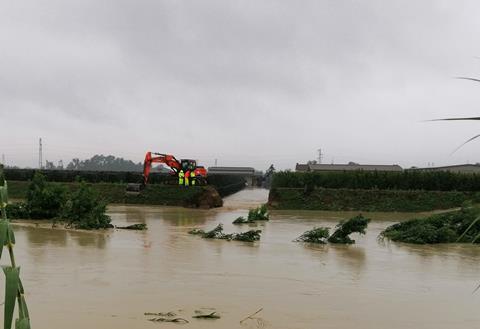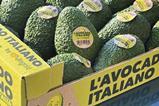Sixteen months on from the flooding that devastated vast swathes of northern Italy, rainfall dropped by Cyclone Boris has hampered the country’s fruit and veg production

Italy’s fresh produce business is on high alert again after widespread flooding once again covered large parts of the country’s northern and central regions.
In a grim echo of the floods that swamped large tracts of northern Italy in May 2023, this time it was excess rainfall from Cyclone Boris which inundated the country’s fresh produce heartland of Emilia-Romagna.
There are now major concerns about the viability of various crops due to be harvested soon like late stonefruit, kiwifruit, apples, pears, grapes, and leafy salads.
According to national agricultural union Coldiretti, hundreds of farms in Emilia-Romagna as well as Marche to the south were affected by overflowing rivers. The worst affected areas are near Bologna, Forlì, Cesena, Ravenna and Rimini.
Alberto Mazzoni, vice-president of Confagricoltura Forlì-Cesena and Rimini, described the situation as critical and called on regional officials to act. “It is now clear that the territory needs to be maintained differently. We understand that certain projects can require time, but in the meantime some basic interventions at very least must be carried out,” he said.
“There is also concern for autumn fruit production, from kiwifruit to persimmons,” he added. “Unfortunately, in the next few hours the rainfall is expected to intensify, so the extent of direct and indirect damage is destined to increase.”
Under water, under threat
Thousands of hectares of vegetable production and orchards are understood to be under water. And a number of warehouses and rural buildings have also flooded, with damage described as “very serious”.
In Forlì-Cesena and Rimini, Confagricoltura said vegetable fields had been ruined, while some vineyards had been left impassable and their harvests destroyed.
Around Ravenna and Faenza, excess water from the Marzeno, Senio and Lamone rivers reportedly submerged apple and pear orchards, devastated some vineyards mid-harvest, and inundated land planted with vegetables and cereals. Some farms near Bologna were also affected.
The situation in Lugo, a town near Ravenna that is home to the leading fresh produce grading tech provider Unitec, was also particularly acute. Similarly in Bagnacavallo, where prominent fruit exporter Granfrutta Zani is based, several inhabitants were forced to seek refuge and await helicopter rescue on their own roofs.
Harvests in doubt
To the north-east of Cesena, local Confagricoltura leader Matteo Brunelli said the greatest damage had occurred in the triangular region cornered by Cesena and the coast towns of Cesenatico and Rimini.
“In my land, for example, the latest lettuce plantings are literally under water, and other seedlings planted about ten days ago are almost submerged,” he explained. “If the water recedes within 24 to 48 hours, good, otherwise I can say goodbye to any hopes of a harvest and we are talking about a total of 200,000 seedlings.”
Piergiorgio Lenzarini, president of Confagricoltura Bologna’s fruit and vegetable department, suggested some of Emilia-Romagna’s late stonefruit crop might also be affected.
“There will probably be damage to the late plum of the Angeleno variety,” he noted, “which in the next few days could develop rotten parts due to excessive humidity. A similar situation could also occur for the late peaches still to be harvested, but there are no particular problems for the Abate pears, most of which have already been harvested, and for the kiwifruit.”








